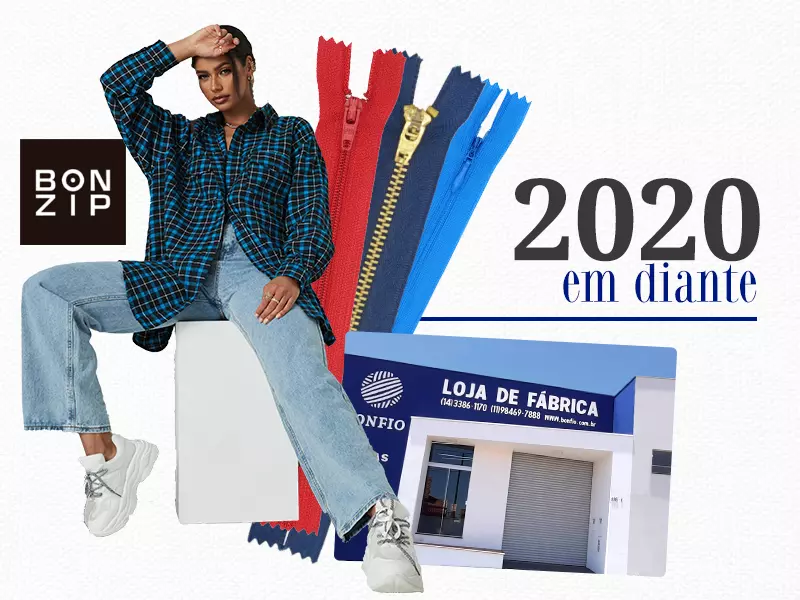Deseja mudar o idioma?
¿Quieres cambiar tu idioma?
The construction of our success history
The history of BONFIO walks interlaced with fashion history, following the evolution of the Brazilian textile sector and the worldwide scenario too.
Over more than 80 years, BONFIO has evolved with the changes and transformations of the sewing market, becoming one of the main manufacturers and distributors of Threads, Yarns, and Zippers in the country.
Our tradition has Syria as its birthplace. Where there on the other side of the world, that weaving was considered one of the oldest technologies that the founder of BONFIO, Emílio Gabriel Bonduki, had a direct relationship with the development of knitwear, blankets, and rugs.
The production of balls of skeins of wool from sheep was large and very successful. After all this experience and baggage acquired, BONFIO was born in 1941 to make history in the Brazilian market.
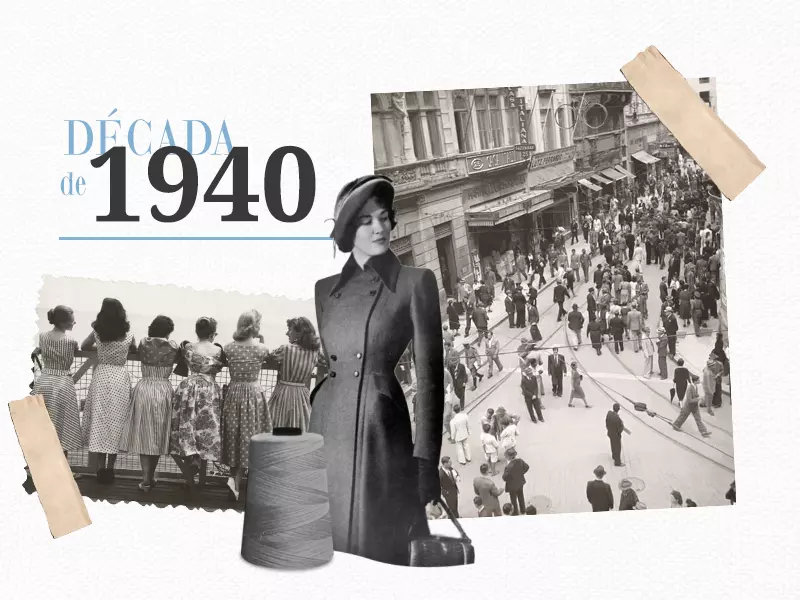
Decade of 1940
Founded by brothers Emílio and Georges Bonduki, the distributor of threads, yarns, fabric, and trims was founded in the 40s as a reseller, at 25 de Março street in São Paulo. With the growing development of the time in the region considered the capital’s wholesale and textile hub, Bonduki, as it was known by customers, was consolidated by the quality and variety of products offered.
The main pieces commercialized were Rayon Yarns and Cotton Threads responding to the needs of fashion marked for by wide sleeves slim silhouette and a super-defined waist. Skirts were usually straight with inverted pleats for easy movement. A time when elegance reigned in times of war, with the great name of the designer Christian Dior. His productions were and still are a great source of inspiration.
By the way, the accelerated destocking caused during the period of the Second World War contributes to the entrepreneurs had the desire to produce their products and expanded their business. The movement that happens in the following years.
Decade of 1950
Attending to the growth necessity for clothing and accessories of big companies and trims from all of Brazil, the brothers installed, in 1950, a small factory of Threads in the Bras neighborhood, with the purchase of the first LEESONA conical machine, initiating the industrialization process. From there, the products leave direct to supply the shelves of the store.
Remarkable by the decade of the golden era, fashion was characterized by glamour and elegance. Whellset dresses and well-marked at the waist, in conjunction with a lot of accessories were the biggest trend.
The second half of the decade defines the beginning of the Brazilian industrial phase in an accelerated process, with emphasis on the more dynamic and non-traditional sectors. Due to influence, the textile sector begins to undergo major transformations and BONFIO, of course, follows this movement.
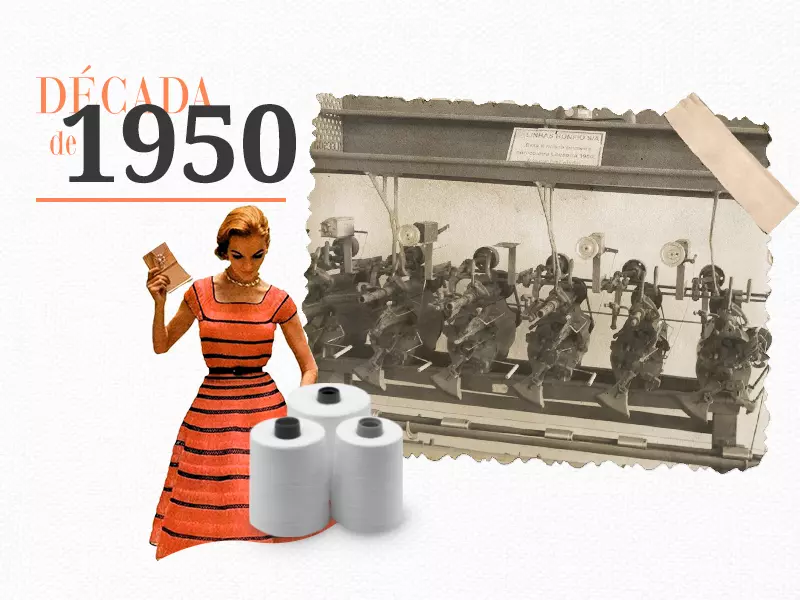
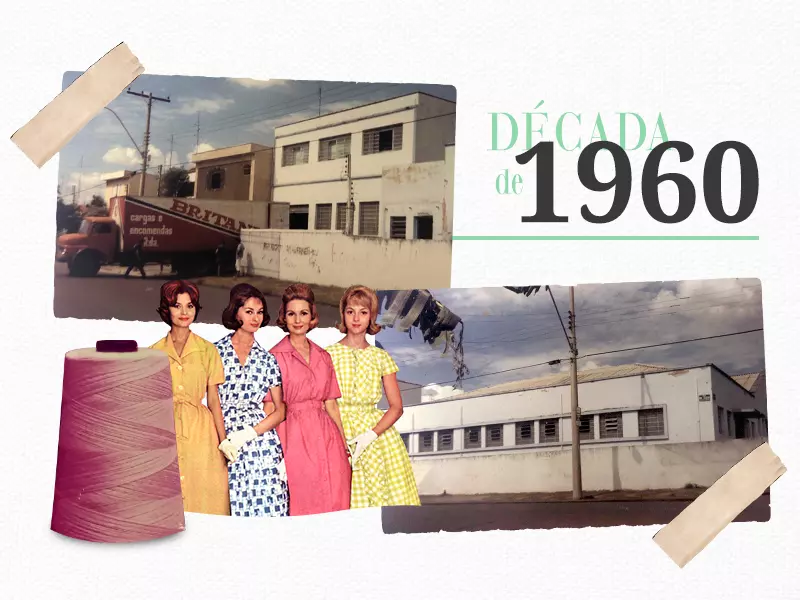
Decade of 1960:
In the 60’s, due to the great development of the textile hub of Americana, the company installed a new unit in the city, which was already emerging as the largest textile production and distribution center in South America.
The great highlights of this period were polyester and nylon yarns, and threads of Rayon for embroidery. The products gave a noble and high-quality finish to the dresses that were the great brand of this period, full of geometric, floral, and tie-dye prints.
Breaking patterns and freedom of choice were keywords to understand the fashion generation of “baby boomers”, where clothes showed this state of mind. In women’s clothing, the miniskirt stood out. For the first time in fashion history, young people no longer dress like their parents. And once again, our products shone in productions.
Decade of 1970:
After the death of one of the founders, the Brás unit became a warehouse. And the company begins to invest in the Americana plant to start of the production of polyester and polyamide yarns, which would replace cotton and rayon yarns. With all this revolution in the sector, BONDUKI BONFIO continues to evolve and starts to adopt the BONFIO brand, acquiring modern machinery. Capable of producing threads, and yarns with the highest quality and variety standards, in a short time it became the leader of the sector in the country.
It is a time of extremely fast growth in the market with the start of production of polyester yarns in Brazil. Following the fashion of the 70’s with polyester and polyamide textured yarns, the company became a reference in the overlock sewing and stands out as a supplier. With the hippie look, bell bottoms and romantic dresses take over the streets.
At the same time, studs, graffiti shirts, black leather clothes, boots and safety pins were no longer exclusive to punks and the glam rock style became the darling. Names like Calvin Klein, Giorgio Armani, and Ralph Lauren contributed to fashion internationalization, while professional women were looking for a more concise wardrobe.
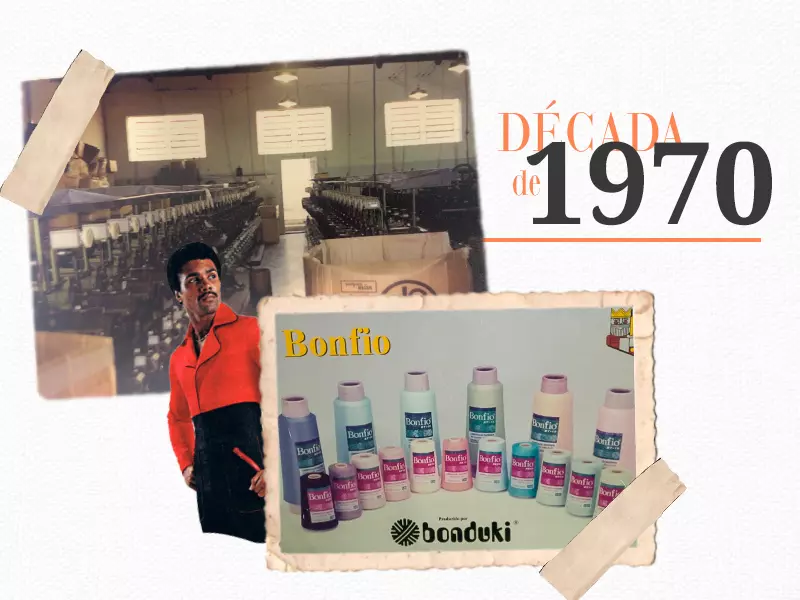

Decade of 1980:
In 1988, with production growing rapidly in Americana’s branch, the brand unified the production of threads to better serve. Installed in a new building, with 4.200 m², on Agenor Faion street at Vila Bertini, where it remains until today. It is in the 1980’s that conical LESSONA’s replaced by SCHWEITER, which later became SSM – Scharer, Schweiter e Metler.
During this period, the BONFIO RETA was also launched, made of spun polyester used in super extravagant clothes characterized by blazers with shoulder and sweaters pads.
This is the decade of overdoing, where consuming clothes from great designers and brands made young people’s minds. In the world, the change of attitude with an emphasis on a more adult glamor becomes essential for the creation of empires like Giorgio Armani. And the ostentation even reached the accessories worn by the great actresses.
Decade of 1990:
All this diversity arrives in the 90’s, when different compositions and styles lived in harmony. Round glasses, ripped jeans, high-waisted pants and a plaid shirt become the most worn looks by celebrities.
While the reduction of customs tariffs and bureaucratic hurdles facilitated imports, causing many companies to close down, BONFIO went in another way. Here, we inaugurated the first store factory in Bom Retiro in São Paulo, providing high quality and resistant products, with emphasis on the trilobal threads BONFIO NEON the embroidery that follows the trends of grunge fashion. The phenomenon brought an uncompromising and messy look. The plaid shirt and ripped jeans were the main identity signs.
It was during this period that BONFIO also carried out a complete modernization project at the factory with the purchase of SSM, Hacoba and ICBT machines, investing heavily to reduce costs and become even more competitive with imported products.
With investment in technology and international recognition, in 1999, BONFIO establish a partnership with an American&Efird (A&E), the largest yarn manufactured in the EUA, with headquarter in North Carolina and one of the world leaders in yarn production, operating in 32 countries. With this, the brand begins to launch innovative products, based on advanced A&E technology, developed in the R&D laboratories located in
Mount Holly-NC. At the end of the decade, another important step was taken with the purchase of a yarn dyeing plant in Itaquaquecetuba-SP.
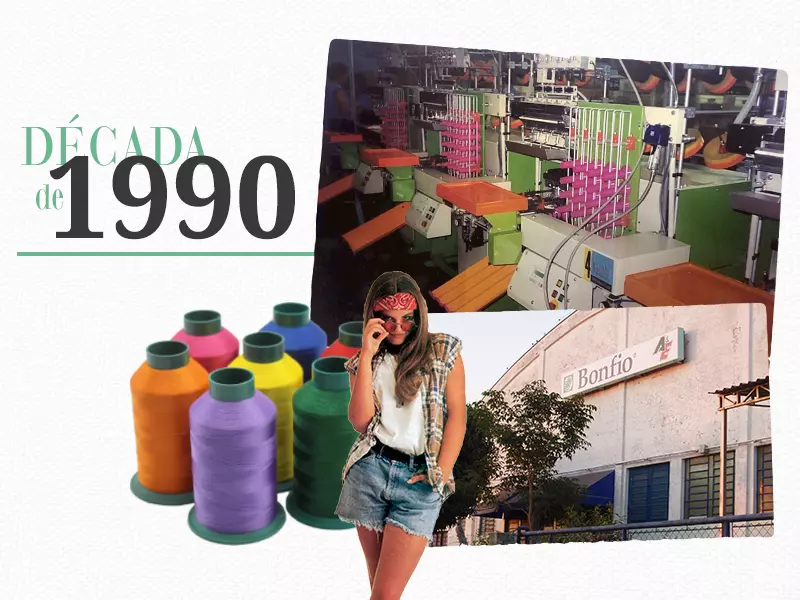
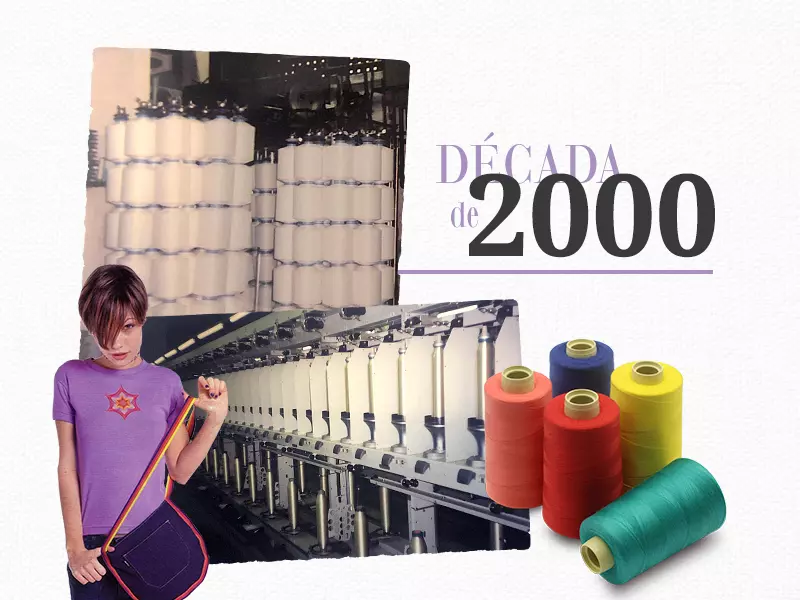
2000 years:
The 2000 years, consolidate BONFIO’s market share. The company participates for the first time in an international fair, Colombiatex, in Medellín.
And the news doesn’t stop there. It is in this decade that BONFIO launches the Thread BONFIO CLASSE A, poly-poly core-spun. A product that would become one of the brand’s flagships in the following years.
Lace, silk, satin, and cotton were the fabrics that stood out the most, marked by a generation that loved low-waisted jeans, candy colors, embroidery, and beads.
Continuing the expansion plan, in 2003, the company installed one Twisting of Yarns in Três Lagoas, in Mato Grosso do Sul. And in 2005, a Joint Venture was signed with A&E - American& Efird, in the largest factory of Threads in the United States.
We started the decade producing locally UL Certified flame retardant thread (Underwriters Laboratories) and with a lubrification system developed in the USA. With this, BONFIO becomes one of the only Brazilian companies approved by Mesdan (the world leader in the manufacture of splicers and textile laboratory equipment), guaranteeing quality and high technology in your products.
With the conquest of rights and the great revolutions, freedom takes over space, including in fashion. Overlays, the combination of different colors and proportions, clothes with many prints are a constant presence in the looks.
Following trends, BONFIO stood out with the sale of the BONFIO RETA and CLASSE A threads. In addition to the launch of the BONFIO RETARDANTE A CHAMA, 100% meta-aramid with DuPont Nomex fiber.
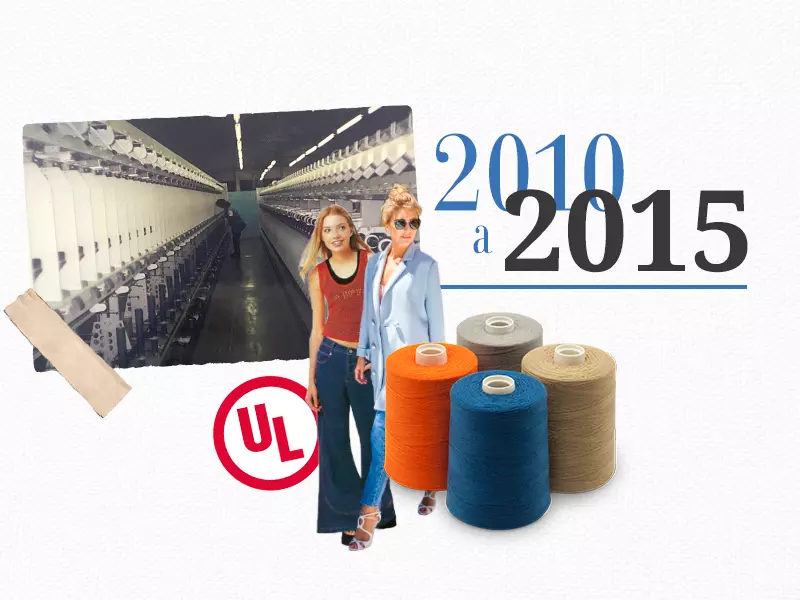
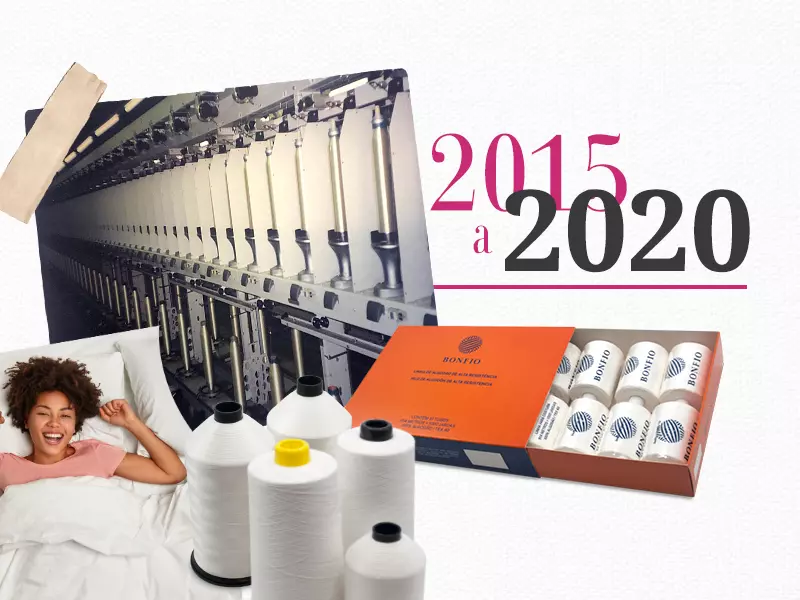
2015 to 2020:
The expansion of BONFIO’s portfolio doesn’t stop and the period is remarkable for the acquisition of Qualitextil, which specialized in threads for mattress. With this, high-tenacity polyester yarns were launched for matelassê (Titan) and Fortimax yarns.
In 2015, an important change occur with the process of dyeing transferred to the city of Brusque, in Santa Catarina, recognized for being one important textile pole.
In 2019, launched the thread of Retrós, one thread of Egyptian cotton, on label 50, Specific to the sewing patchwork and domestic products in general, being a different product of BONFIO.
From this period that, with the input of capital, the company modernizes the dyeing and begins a new stage of evolution and growth.
Adapting to new times, the brand reformulates, modernizes, and positions itself for a new moment.
The company also starts to operate in the zipper market, launching the sub-brand BONZIP. The beginning of the decade is marked by the opening of new factory stores in BONFIO. One store opens next to the factory in Americana and another three in the state of São Paulo, in the city of Taguaí, and two in the capital, in Brás and Bom Retiro.
Focusing on quality allied with technology, the brand continues to innovate, being a reference in the national and international markets.
Over the last eight decades, we have constantly evolved, keeping up with the changing world and fashion. We are proud of everything that we have already achieved and we look to the future with the certainty that we will continue to be part of the history of the Brazilian and global textile sector.
